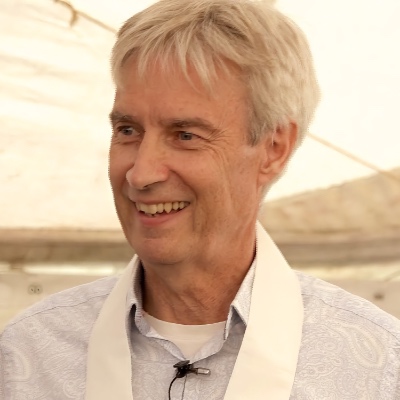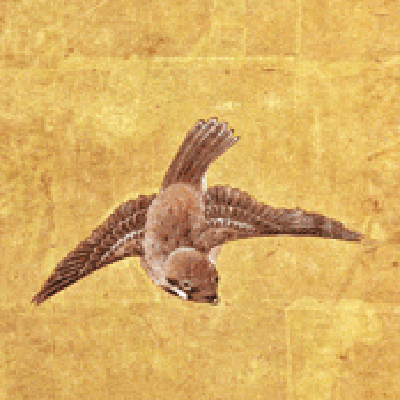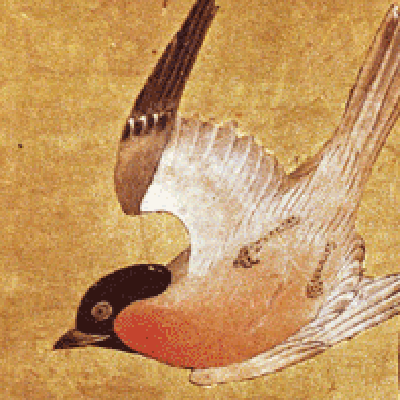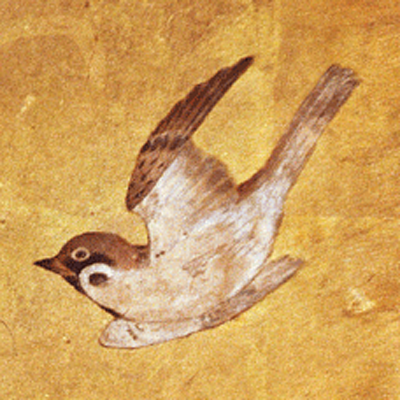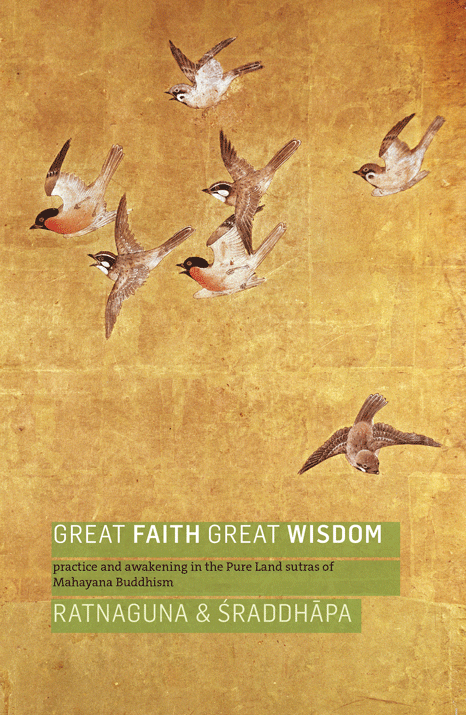GREAT FAITH, GREAT WISDOM
The making of a beautiful book‘It begins with the Buddha – the human, historical Buddha. He is staying in Prince Jeta’s Grove, in Anāthapiṇḍada’s Park, and with him are one thousand two hundred and fifty monks, all of them Arhats, that is, they are all enlightened. Some are mentioned by name, for instance Mahāmaudgalyāyana, Kāśyapa, Revata, the Buddha’s half-brother Nanda, his cousin and closest disciple Ānanda, and his son Rāhula. Also present are an unspecified number of Bodhisattvas, including the Youthful Prince of the Dharma, Mañjuśrī, and Ajita, also known as Maitreya, the Friendly One. Finally, many hundreds of thousands of devas – gods – including Indra and Brahmā Sahāṃpatin, are also present.
‘This is a fairly standard way for a Mahāyāna sutra to begin, with its mixture of history and myth. Historically the Buddha often did stay at Anāthapiṇḍada’s Park, and the named monks were in fact his disciples. However, the Bodhisattvas mentioned are mythical figures and with these we begin to move from history to myth – from early Buddhism to the Mahāyāna. And then there are the gods. The authors of Mahāyāna sutras liked to surround the Buddha with tens of thousands, even hundreds of thousands of beings, humans and non-human. They liked to place the Buddha in a cosmic arena. He might be teaching one of his disciples, just as he does in the older, Pali suttas, but thousands of beings will be looking on and listening in. It’s as if the authors were saying that although the Buddha was human, and that he could therefore only teach a few people at a time, in another sense – in a deeper kind of reality – his teaching was a cosmic event that affected not only those to whom he was speaking directly. When the Buddha spoke the universe changed.’
– Ratnaguna in Great Faith, Great Wisdom
Ratnaguna talks about his new book “Great Faith, Great Wisdom”.
These Buddhist texts – both ancient and perennial – put forward a path of faith and grace, as well as effort and practice. Using a practical and imaginative approach, Ratnaguna explores the main themes of the sutras, which are expressed through myth and magical imagery. This book will appeal to both practising Buddhists – whether from the East Asian Pure Land traditions or not – and anyone interested in Buddhism from a practical point of view. The book includes new translations of the three Pure Land sutras by Śraddhāpa.
A three-part series of talks from Ratnaguna introducing the Pure Land texts as a practice in themselves, and discussing their relationship to Sangharakshita’s core teachings.
In the first talk Ratnaguna takes us on an excellent exploration of imagination itself, essential for understanding the sutras on their own terms. The second talk discusses how the texts hint at what Sangharakshita calls the supra-personal force of Bodhichitta. The third talk is on the importance of sangha in the sutras and its relevance for us when approaching the texts.
We’re also delighted to present an interview with Ratnaguna about the Pure Land tradition.
